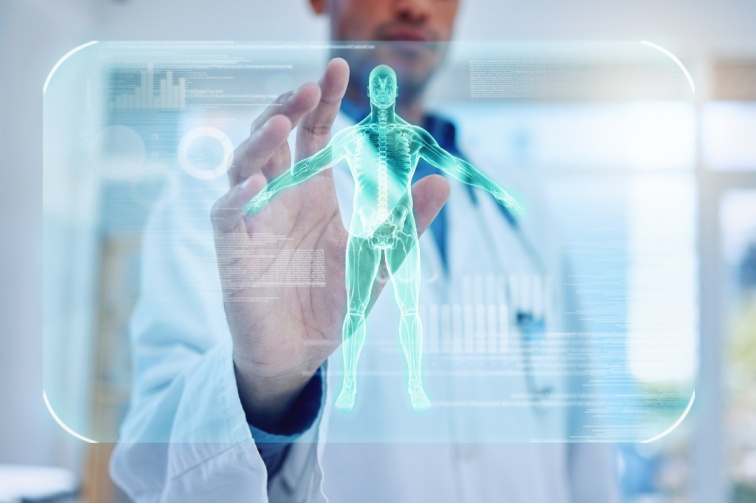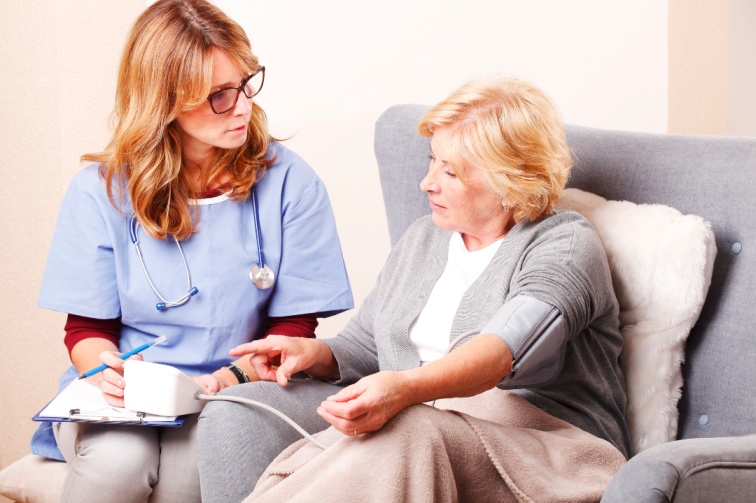
Healthcare is changing fast. The days of spending hours in waiting rooms are fading. Today, advanced technology brings expert care right to your home. This shift is making life easier for patients and families everywhere.
How future healthcare technology is elevating at-home care is evident in this transformation, as innovations continue to enhance accessibility and convenience.
Home healthcare is growing rapidly. By 2030, the U.S. market will reach $253.4 billion. People want care in familiar surroundings, comfort, and independence, and technology makes this possible.
The Rise of Telehealth in Home Care
Telehealth changed everything during the pandemic. It’s now a normal part of healthcare. Patients connect with doctors through video calls. No travel needed. No exposure to germs.
Virtual visits work well for many needs. Medication reviews happen online. Mental health consultations feel private and safe. Follow-up appointments take minutes, not hours.
Doctors can now reach patients in remote areas. Specialists are just a click away. This saves time and money. It also reduces stress for patients with mobility challenges.
Quality Home Care Services now includes telehealth as a standard option. This gives patients more control over their health journey.
How Remote Patient Monitoring Works
Remote monitoring devices track your health 24/7. They measure blood pressure, heart rate, and glucose levels. This data goes straight to your doctor. Think of it as having a health assistant at home. These devices catch problems early. They alert doctors before small issues become big emergencies.
How future healthcare technology is elevating at-home care is clearly seen in these innovations that make real-time monitoring possible. Patients with diabetes use continuous glucose monitors. Heart patients wear smart ECG devices.
Sleep trackers help identify rest problems. All this happens without leaving home. Hospital readmissions drop when patients use these tools. Emergency visits become less frequent. Families feel more secure knowing help is always watching.
Wearable Health Devices That Save Lives
Smartwatches do more than count steps now. They detect falls and call for help. They track heart rhythms and spot problems.
For seniors, these devices offer peace of mind. Location tracking helps families find loved ones with dementia. Activity monitors show if someone is moving normally.
The best part? These devices are simple to use. They send alerts to family members instantly. Many Senior Care Services now include wearable devices in their care plans.

Artificial Intelligence in Home Healthcare
AI is transforming how doctors diagnose and treat patients. It analyzes health data faster than humans can. It spots patterns that might be missed.
AI-Powered Diagnostics
AI tools review test results in seconds. They compare your symptoms with millions of cases. This helps doctors make better decisions quickly.
Virtual assistants answer basic health questions anytime. Chatbots remind patients to take medications. They track symptoms for people with chronic conditions.
Predictive Care Through AI
AI predicts when health problems might occur. It calculates fall risks for elderly patients. It warns about possible complications before they happen.
This technology helps Respite Care Services providers plan better care schedules. Caregivers can prepare for potential issues in advance.
Virtual Reality for Physical Therapy
VR makes rehabilitation fun and effective. Patients wear headsets and follow guided exercises. Balance training becomes a game. Mobility work feels less like work.
Physical therapists monitor progress remotely. They adjust programs based on real-time data. Therapy is more interesting, so patients get better faster.
People who have had a stroke use VR for coordination exercises. People with neurological conditions practice cognitive tasks. The results are impressive.
Smart Home Technology for Better Care
Voice-activated assistants help patients control their environment. Lights turn on with a simple command. Thermostats adjust for comfort. Door locks work by voice.
Smart toilets monitor hydration levels. They can detect signs of infection. Automated lighting prevents falls at night.
These features make homes safer for everyone. They’re especially helpful for people receiving Personal Companion Services who need extra support.
Robotics and Companion Technology
Robots are entering home healthcare. They help with daily tasks like cleaning and meal prep. They remind patients about medications. They monitor vital signs continuously.
Companion robots like ElliQ reduce loneliness in seniors. They provide conversation and mental stimulation. They help with cognitive exercises for dementia patients.
These robots also assist with mobility. They can retrieve objects and detect falls. While still developing, they show great promise.
Digital Health Platforms and Care Coordination
Modern software stores all health data in one place. It is safe for doctors, nurses, and family members to use, which ensures that everyone knows about medications and appointments.
With cloud-based systems, you can talk to a doctor online and see all of your medical records. Team members can talk to each other right away. Nothing gets lost or forgotten.
This coordination is vital for Adolescent Care Services, where multiple specialists may be involved. Parents can track everything from one dashboard.
Benefits of Technology-Enhanced Home Care
There are clear benefits to home healthcare technology:
- More Access: People in rural and remote areas get care.
- Saving Money: You spend less money if you spend less time in the hospital.
- Patients are happier when they get better at home.
- Better Results: Finding problems early on stops them from getting worse.
Healthcare systems also gain. There are free hospital beds for patients who need them. Medical staff work more efficiently. Resources stretch further.
Challenges We Still Face
Technology isn’t perfect yet. Some elderly patients struggle with digital tools. Not everyone has reliable internet access. Privacy concerns worry many people.
Healthcare devices can be expensive. Insurance doesn’t always cover them. Different systems don’t always work together smoothly.
Training is essential. Patients need clear instructions. Support must be readily available.
The Future of Healthcare Technology at Home
The next decade will bring exciting advances. AI will become more accurate and helpful. Robots will handle more complex tasks. VR therapy will expand to new conditions.
Blockchain technology will secure health data better. Nanotechnology might monitor health from inside the body. 5G networks will enable faster, more reliable connections.
Care will become truly personalized. Prevention will replace reaction. Hospitals will serve only the most critical needs.
How Future Healthcare Technology Is Elevating At-Home Care Today
The transformation is happening now. Patients manage chronic conditions from home successfully. Seniors maintain independence longer. Families worry less about their loved ones.
Technology makes caregivers more effective. They spend less time on paperwork and more time with patients. Job satisfaction improves. Burnout decreases.
Healthcare becomes patient-centered instead of hospital-centered. People receive care on their terms, in their spaces, at their convenience.
Conclusion
How future healthcare technology is elevating at-home care isn’t just a trend. It’s a revolution in how we think about health and wellness. These new technologies, like telehealth, AI diagnostics, wearable devices, and companion robots, make life better every day.
The future of healthcare is personal, accessible, and effective. It happens where you feel most comfortable—at home.
At Home Healthcare Services, we understand the power of combining technology with compassionate care. We stay up to date on the newest medical technologies so that we can give you the best home care possible. We’re here to help you or someone you care about live a healthier, happier life at home.
Contact Vital Healthcare today to learn how we can support your healthcare journey with cutting-edge solutions and personalized attention.
FAQ,s
How does telehealth improve home healthcare?
With telehealth, patients can video call doctors. This saves you time and makes you less likely to get sick. It’s a good way to keep track of medications, follow-ups, and mental health visits. It makes it easier to get to and use healthcare.
What is remote patient monitoring, and how does it work?
Remote patient monitoring uses wearable devices and sensors to constantly check vital signs like blood pressure, heart rate, and glucose levels. This information is sent to doctors and nurses right away so they can help before things get worse.
Are wearable health devices accurate enough for medical use?
Yes, the FDA has approved modern wearable devices for medical monitoring, and they are very accurate. They can even tell when someone falls, which is helpful for home health care because they give accurate information about heart rate, activity levels, and sleep patterns.
How is AI being used in home healthcare?
AI looks at health data to guess what might go wrong, helps doctors figure out what’s wrong by comparing symptoms to millions of other cases, and runs virtual assistants that remind patients to take their meds. It helps doctors make decisions about how to care for patients more quickly and with more information.
How Future Healthcare Technology Is Elevating At-Home Care?
It brings expert care home through smart devices and real-time tracking, improving comfort and early issue detection.
